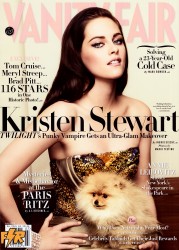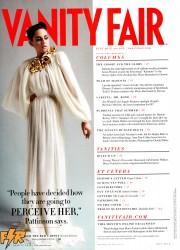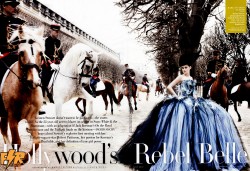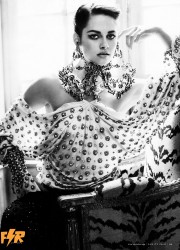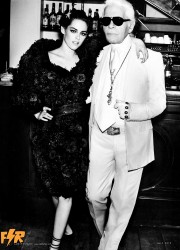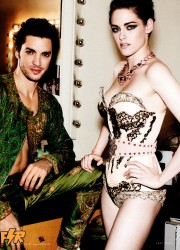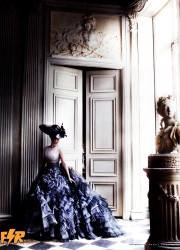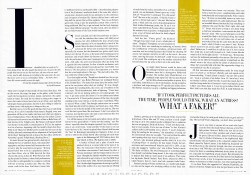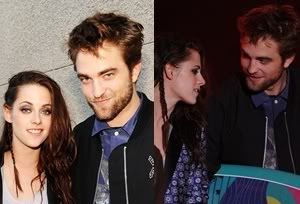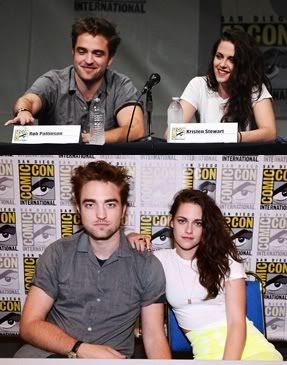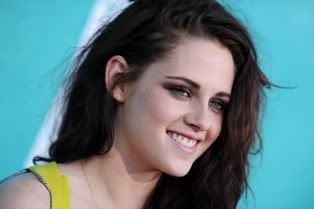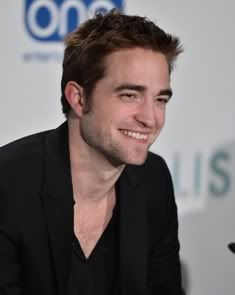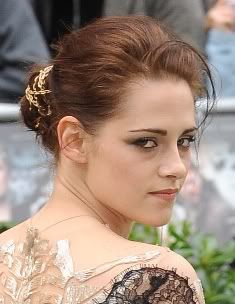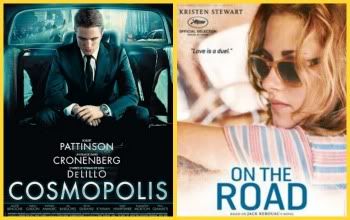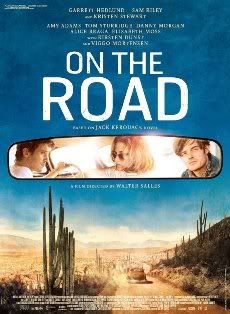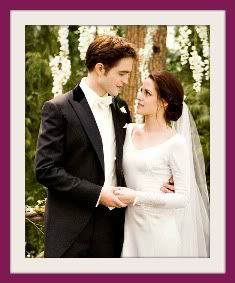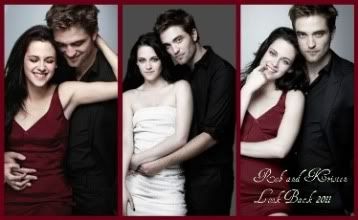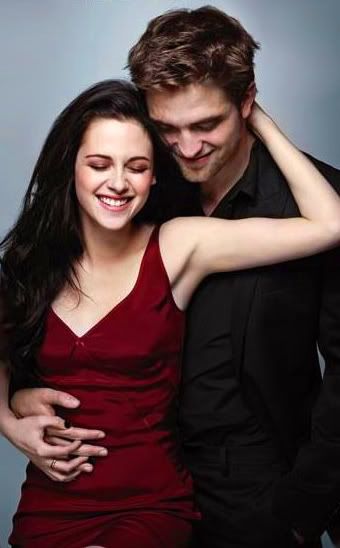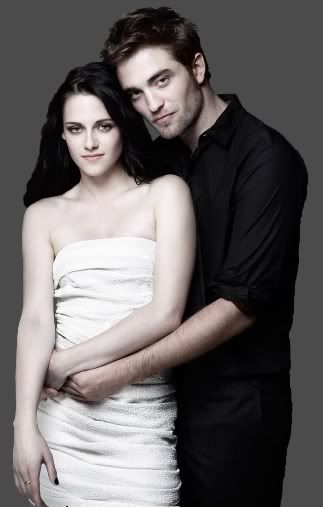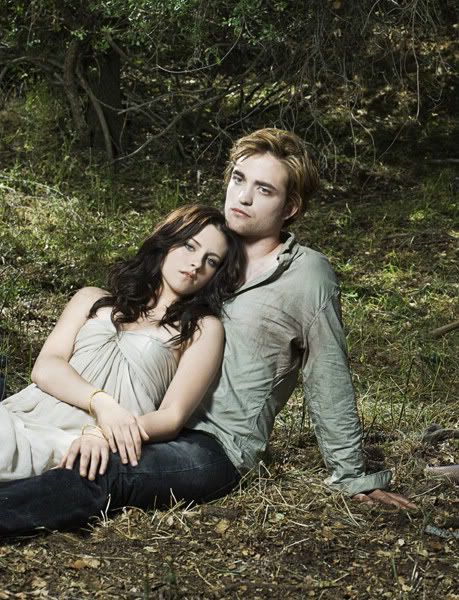source kstewartfans Alice_intwiland kstewartnews
Regular (with complete article) scans, video and screencaps here
Transcript by StrictlyRobsten. Thank you.Regular (with complete article) scans, video and screencaps here
There aren’t enough of those kinds of mad ones these days. Not on the screen, the stage, the page, or the gallery walls. Instead, watch the bowing down to fame, money and power, the capitulation to status. So rarely do we witness a young artist, singer, or actor who wants to burn, burn burn, to set off on a new path that will inspire future generations, but who is willing to suffer the rod that comeswith saying no to things as they are.
But this is not a cry for the good old days; there was no such thing anyway. It is a call to remember what matters. Happily, every new generation still has a few misfits who have sworn their own declaration of independence. One is Kristen Stewart, the relentless 22 year old actress best known to tens of millions of fans as Bella Swan, off-beat heroine of the Twilight series. But Stewart will ingrainherself even depper in the public’s consciousness in 2012 as she appears in a trio of movies, beginning with this month’s Snow White and the Huntsman (Hollywood’s second take this year on the old fairytale) and continuing with an adaptation of the hipster bible On the Road. Topping them all, at least at the box office, will be this November’s grand Twilight finale, Breaking Dawn Part 2.
En route Stewart has gotten herself a bad rap for making the lives of talk-show hosts, red-carpet photographers and interviewers hell, because she can’t, or wont, play the usual movie-star game. “Kristen doesn’t know how to be in a popularity contest,” says Sean Penn, who in 2006 directed the then 16-year-old actress in Into the Wild. Penn has nothing but praise for Kristen, whose brief performance in his film is unforgettable; he compares working with her to having a perfect day – blue sky, blue ocean- walk in the door. And when it came time to publicize his brave and beautiful film – a heartbreaking adaptation of Jon Krakauer’s nonfiction book of the same title, about a young man’s doomed search for an alternative to commerce and corruption of modern life – Stewart did her best to rally and help shill the picture. But as Penn explains, “You can see Kristen generously trying to join the popularity contest when a movie is being publicized. She’ll try to get on board, but her body language has a whole different dynamic.” In other words, she’s not about to get any Saleswoman of the Year awards anytime soon.
Stewart certainly isn’t the first performer to take issue with the sideshow that comes with Hollywood success, but she’s definitely the least afraid young female superstar to be so outspokenly critical of the system. Since the dawn of cinema, there’s always been a pressure for movie stars to project the right image, especially the women, but the demands have gotten much more intense over the last 25 years, to the point where looking good at premieres and award shows has become a nearly full time job, with the performers often mere mannequins for product placement. And sadly, the actors and musicians often go along with it, against their own instincts, for the fear of media retribution, such as landing on some dreaded worst dressed list. God forbid. Not Stewart, who has gotten used to her reputation as a snarler that she even laughs about it. She says, “My dad will be like ‘Oh, you could have smiled a little more.’”
Even that might not help. “People have decided how they are going to perceive her,” says Robert Pattinson, her red-lipped Romeo in the Twilight films. “No matter how many times she smiles, they’ll put in the one picture where she’s not smiling.” It’s true, though, that despite her ravishing looks, she is not a ray of sunshine on the red carpet. Think thunderstorm, bolts of lightning. “I have been criticized a lot for not looking perfect in every photograph,” she says. “I get serious shit about it. I’m not embarrassed about it. I’m proud of it. If I took perfect pictures all the time, the people standing room with me, or on the carpet, would think, What an actress! What a faker! That thought embarrasses me so much that I look like shit in half my photos, and I don’t give a fuck. What matters to me is that the people in the room leave and say, ‘She was cool. She had a good time. She was honest.’ I don’t care about the voracious, starving shit eaters who want to turn truth into shit. Not that you can say that in Vanity Fair!”
For all that unease on the red carpet and at photoshoots, she has learned to love great fashion – “I never saw that coming,” says Pattinson – especially when the designs represent true creative expression, or are, in her terms, “some cool shit”. If she wears it, you can know she loves it. So I wasn’t surprised when I heard she’d become the face of Balenciaga’s upcoming new fragrance. In fact, we sat down to talk for this article shortly after running into each other again at the Balenciaga fall 2012 fashion show, this past March, in Paris (We had first met in 2006).
A basket of bread and a plate of snails were plunked down at a corner table in the back of Le Duc, the restaurant where Stewart and I met for a lunchtime conversation. I had chosen the place, a Parisian institution with the freshest fish in town, because I thought the clientele would be way too snooty and advanced in age to know or care that Bella Swan was in their midst.(Also, I’d been dreaming about Le Duc’s feather-light langoustines drowning in garlicky butter.) But neither of us was expecting an offering of snails from the waiter, and neither of us, as it happened, was an aficionado. Stewart gave me a weary look of: “You go first.” I confessed. “I’m a bit scared. You?” She rose to the occasion. “I feel like I have to go for it. I’d feel rude not to,” she said. She had on jeans, a black tank top, and a drop dead gorgeous black leather Balenciaga jacket, but I’d say it was more Lady Sybil from Downtown Abbey opposite me, the manners were so gracious. A large gulp of white wine, a tear of bread, and down the hatch slipped Stewart’s first snail.
And her last. “Pretty good,” she declared. “Though I just don’t want to eat a whole plate of them.” I laughed. Throughout our conversations for this piece, there was something so endearing, so human, about her combination of bravado, kindness, self-preservation, self-assertion and revved up fierceness that I found her cheering. Of course, her idealism and drive to tell it as she sees it – the voracious, starving shit eaters be damned! – cold just be a product of her youth. She could grow up to be another narcissistic Hollywood snore, but my sense is that’s not in the cards here.
One might think Stewart would be down with the package-oriented ways of the entertainment business, since she’s a homegrown Hollywood product. Her mother, Jules Mann-Stewart, is a respected script supervisor who has just directed her first film, about sexual politics in prison. Kristen’s father, John Stewart, is also in the business, having worked as a producer and stage manager on TV specials and reality shows. Her brother, Cameron, is a grip – a lighting and rigging technician. Stewart, growing up in the San Fernando Valley, learned the drill about a life in film and TV Early, and just as early, caught the bug to do it. Her dutiful mother schlepped her to auditions but was not gung-ho. “I work with these kids-they’re crazy people. You’re not one of them.” In fact, Kristen’s earliest stabs at job-hunting were a misery. “I wasn’t doing anything but smiling for the camera,” she remembers of trying out for commercials when she was eight. “You can feel that the adults aren’t getting what they want no matter how old you are.”
Stewart, who shunned girlie-girl outfits, didn’t fit in a lot of casting offices – or anywhere, for that matter. Finally, her perseverance and true-to-herself behavior paid off; in 2001, at age nine, she snagged a tomboy type role in Rose Troche’s movie The Safety of Objects. She loved being a part od something bigger than herself, and relished being heard. A few other roles followed in projects that failed to reach much of an audience. Then came her big break: David Fincher’s Panic Room, released in 2002, in which Stewart, then 11, had a lead role, opposite Jodie Foster.
Fincher’s pairing of Foster and Stewart, as a mother and daughter who are the targets of a terrifying robbery in their fancy new Manhattan townhouse, was uncanny. They were born to share the screen – complementing each other both physically and temperamentally. Foster remembers, “Kristen was incredibly mature in some ways and grounded and very calm under pressure. She was an incredible listener, but then she’d say something so child-like that you’d be like, That’s right- she’s only 11.” Foster, who knows a thing or two about being a child star, remembers a conversation she had with Stewart’s mom. “She was not helicopter-y at all. She wanted the film to be Kristen’s thing, but wanted to make sure she was well taken care of, and not overworked. One day she came down to the set for lunch, which I think is very smart. I said ‘Kristen doesn’t want to be an actress, right?’ ‘I’m afraid she does’, she relieved. ‘Believe me, I would love to talk her out of it, but it seems she’s really into it and really focused on it. And it seems like she wants to do it for the right reasons.’” As Foster says, “Kristen does not have the traditional personality of an actress. She doesn’t want to dance on the table for Grandma and put a lampshade on. She doesn’t want to do voices and be the center of attention. If anything, she’s uncomfortable with that. She approaches things in a very analytical way. She is conscious.”
All that awareness and independence made for some tough years at school; at 14, Stewart officially quit and signed on for home-schooling. “I hated school so much,” she says with a shudder. “Look at a picture of me before I was 15. I am a boy. I wore my brother’s I wore my brother’s clothes, dude! Not like I cared that much, but I remember being made fun of because I wasn’t wearing Juicy jeans. I didn’t even think about it. I wore my gym clothes. But it’s not like I didn’t care that they made fun of me. It really bothered me. I remember this girl in sixth grade looked at me in gym and was like, ‘Oh my God! That’s disgusting—you don’t shave your legs!”
Just in case there is anyone left on earth who hasn’t seen the films that made Stewart famous, a brief Twilight primer: Stewart’s Bella is the new kid in town, with an eye for fellow outsiders and heart ready to be given; Edward Cullen, played with Byron-esque flair by Robert Pattinson, is the high-haired high school beauty who just happens to be a closeted vampire; Jacob Black, played by Taylor Lautner, is the buffed-up, frequently topless third point on this romantic triangle, who also, on occasion, turns into a wolf. With this cast the films’ swoon factor is off the charts, but this is something deliciously dorky bout the series, too, especially the high-flying sexual tension. But ultimately the power of the narrative, across the five films drawn from Stephenie Meyer’s four novels, is how it recognizes our need to bond with others; we humans are tribal creatures, even when sucking blood. It was Sean Penn who suggested to Catherine Hardwicke, the director of the first Twilight movie, that she give Stewart a shot. The director signed on because he believed in Stewart’s ability to embody the feelings of longing that drive the original book. There were a few actors still in the running for the part of Edward, and Hardwicke was smart enough to involve Stewart in the final decision making. “Chemistry reads” are a long-standing ritual for testing whether two actors will work well together on-screen, but it sounds as if Hardwicke was experimenting with explosives the day she had Pattinson, a young British actor then best known for playing Cedric Diggory in Harry Potter and the Goblet of Fire, show up at her house to run through some scene with Stewart, in the bedroom no less. “Honestly, I was nervous,” the director remembers. “I saw they were so attracted and Kristen was under-age. I said, ‘Rob, we have a law in this country under 18. Don’t get in trouble here.’ I felt I was in the presence of something strong and powerful.” When Pattinson left, Stewart said “It’s him.” Hardwicke listened but wanted to be sure that their charisma and visceral connection translated onto film. “Not everybody makes it all the way through the screen to our hearts and souls in the movie theater,” the director says, “but these two did. It was electrifying.”
Stewart was fully engaged on set. She is open about the creative tensions that developed. “Me and Rob got into a lot of trouble,” she told me with a smile. “We wanted it to be not so polished. Catherine was all for that. But we were getting notes from the studio. They wanted me to smile all the time. They wanted Rob to be not so brooding. We were like, ‘No! You need to brood your ass off.‘” A worldwide box-office take of almost 400$ million certainly proved that the audience was ready for an unsmiling Bella and a brooding Edward. The fact that emotionally involved fans have taken the films so personally has only increased the sense of responsibility Stewart already felt to her character, to the point where Bill Condon, the director of the last two installments, affectionately calls her the “Twilight-book Nazi,” because her commitment to staying faithful to the novel.
As for some of the feminist critiques – that Bella is a throwback heroine because she sacrifices so much for her man – Stewart strongly disagrees. “In fact, you have someone who is stronger than the guy she is with, emotionally. Fight for the thing you love – you are a remarkable person if you do it. It’s a cop-out to think that girl power is all about gusto and ballbusting.” Her comments seem particularly pointed now that The Hunger Games has come along and outgrossed any of the Twilight films with its take-no-prisoners heroine, Katniss Everdeen, played by Jennifer Lawrence. One might say that swords will be drawn when Condon’s grand Twilight finale, Breaking Dawn 2, hits theaters at the end of the year. Don’t kill me, but I’ve seen it. And don’t worry – I won’t give anything away that the novel’s reader don’t already know. But let’s just say that Simone de Beauvoir would approve.
I asked Stewart when she fully realized that Twilight had changed her life. “You can Google my name and one of the first things that comes up is images of me sitting on my front porch smoking a pipe with my ex-boyfriend and my dog. It was [taken] the day the movie came out. I was no one. I was a kid. I had just turned 18. In [the tabloids] the next day it was like I was a delinquent slimy idiot, whereas I’m kind of a weirdo, creative Valley Girl who smokes pot. Big deal. But that changed my daily life instantly. I didn’t go out in my underwear anymore.”
Between making successive Twilight installments, Stewart has shot a number of mostly smaller films. The one that should have been a keeper was The Runaways, a biopic of the pioneering all-girl L.a. glam-punk band. Stewart (as Joan Jett) and Dekota Fanning (as Cherrie Currie) did their all to bring life to the film, but in the end the direction was obvious and it fell flat, lacking any kick. (Jett and Stewart, on the other hand got along like a house on fire when they met during filming.
After each of these more independent productions, it would be Twilight time again – Old Home Week for Stewart. She says in retrospect she sees the Twilight sets as the equivalent of the high school she never attended. As you may know, her off-screen relationship with Pattinson has drawn enormous attention, but she’s publicly mum on this one. That the two are a couple is not something they seem to want to hide; it’s just that they like their privacy. A friend who knows Stewart very well says, “This is something she wants to keep for herself.”
Stewart is definitely a director’s actress: she loves them and vice-versa. Condon sees Stewart as a sort of trailblazer. “She has a strong sense of creating a new path. She’s gotthe thing that people describe with Jack Nicholson in the beginning that sense of danger, and that you’ll always be surprised,” he says. Rupert Sanders, Stewart director on Snow White and the Huntsman, describes the actress’s relationship to her work with a survival metaphor. “She;s one of those people who’s got the creative spirit and exists by having to output it,” he explains. “She’s like a kind of copper wire. She’s got this incredible electric energy and she just has to find a ground to discharge some of that power. Otherwise I think she’d explode.”
In his out-there Snow White film, Sanders high-lights Stewart’s capabilities as an action star, and it’s fun to see her make use of her natural physicality. “To me Kristen is at her best when she is in fight-or-flight mode,” Sanders says. “The perception of her is that she’s awkward,” says Pattinson. “But it’s funny knowing her. It’s the absolute opposite of what people think. She is insanely confident. And insanely brave. “ Sanders still shivers when he remembers shooting a scene that involved Stewart taking a 20-foot leap into filthy brown water in a tank at Pinewood Studios, in the freezing cold of December. “Her performance before she jumps is sublime,” says Sanders. “You see the hesitancy in her stomach, where she must have been thinking, I don’t want to jump!” After she did the stunt, Sanders found the actress in her trailer in soaking clothes hovering in front of a tiny heater. He was worried she’d get hypothermia if she did it again. But there was no stopping her.
A different side of this fearlessness is what makes Stewart’s performance in On the Road so memorable. Adapting a beloved, even sacred book is always tricky, but when Director Walter Salles decided to take on Kerouac’s 1957 novel, he set himself an unusually hard task, because the text- about a group of young people trying to escape the conformity of their time – is so full of spontaneity and commitment to living in the moment that too much planning would have rendered it dead on arrival as a film. Thus Salles felt he needed actors who could improvise and who truly understood what Kerouac’s adventure book was all about: the essence of experience. He was sharing this with two old friends, the composer Gustavo Santaolalla and the director Alejandro Gonzalez Inarritu, when they both said, Stop! Don’t even starting looking for the part of Marylou – the Cassady character’s sometime lover and fellow traveler, a woman hell-bent on following her own path. Both men told Salles that Stewart was his Marylou. He followed up and learned that Stewart (who’d placed a copy of On the Road on the dashboard of her first car, that’s how much the book meant to her) was so passionate and insightful about the character that never even auditioned her for the part. (The top-notch cast also includes Amy Adams, Steve Buscemi, Garrett Hedlund, Kristen Dunst , and Viggo Mortensen.
Stewart made sure she know her stuff before filming started, spending hours talking to the daughter of LuAnne Henderson, Neal Cassady’s first wife and Marylou’s real-life counterpart. Her director calls Stewart “a great partner in crime,” and her performance has qualities of a jazz riff; it is alive with freedom and a sense of beat (small b). “The desire to really live an authentic life seems to me very, very strong in her.”
A few days after we’d has lunch together in Paris. I watched On the Road with Stewart at a screening room in the Bastille section of town. She showed up in a red plaid shirt, jeans, the same Balenciaga black jacket she’s had at lunch and sneakers; your all-American girl on a trip to Paris. As much as she loves this film, and is proud of it. I could feel Stewart squirming in her seat and hear her “yeeoow” when things got intense on screen. My favorite moment was during a beautifully uninhibited sex scene between Marylou and Garrett Hedlund’s Dean Moriarty (the Cassady character). I could have sworn I hear Stewart mutter, “For God’s sake!” Her publicist was sitting between us and had thoughtfully brought along some French “muffins” that were like fancy doughnut holes. I popped a few in my mouth to cover my gulps. After the screening was over, I had to run, because I had an appointment, so I couldn’t stay to discuss it with Stewart. I was almost glad, because watching the movie has been such an intimate experience – which is, of course, the power of the film, but still. So, I took off in a car and she went her way.
Departures came to signify Stewart for me. After the lunch we’d had at Le Duc, earlier that week, when we finally got ready to move on, Stewart peeked out the door at something and went over the bar, where I noticed a testosteroned- up marvel of a guy, clearly a bodyguard, with whom she had a few words. Stewart didn’t say anything to me when she returned to the table but was ever so slightly flushed, and there was a subtle clenching of her jaw. I looked out the door myself. “Oh boy,” I said. The paparazzi were posted; it turned out they’d followed Stewart, who had traveled in an inconspicuous black van from her hotel to the restaurant. Just a few minutes before, she had summed up the conundrum of the kind of fame she’s been living with. “It’s not the fans that are scary,” she said. “Each one of them is different. But large groups of people are scary – there’s no individual there. It feels like it’s just an enormous body of water, like a wave that’s stronger than you. And it’s loud like water, so it is all-encompassing. You’d have to be a sociopath not to be penetrated by the human energy that’s, like, cumulatively being hurled at you from every direction.”
We decided to try to wait out the cameras and keep talking, though I worried that meant that we’d end up spending far more time together than had been allotted on her schedule. She didn’t care. “I’m not doing anything,” she said. “I was just being protected by people that do that job. I have nothing to do.” (She is not someone who is intent on proving how wanted she is; the paparazzi do that job wether she wants it or not.) Hours later, when we finally made our respective getaways, the paparazzi were still waiting for their $50,000 candids (Make that $75,000 if they get her angry and $100,000 if the prize: a shot of her and Pattinson.) I hung back while Stewart and the bodyguard drove off, with the pack of photographers on their trail. I pictured her wishing she were anywhere else, perhaps heading off in the open blue pick up truck, a proud possession of Bella’s police-chief father in Twilight, which she’d bought and driven home, from the location in Portland, Oregon, to Los Angeles, where the filming was over. “But,” as Kerouac wrote “no matter, that road is life.”

